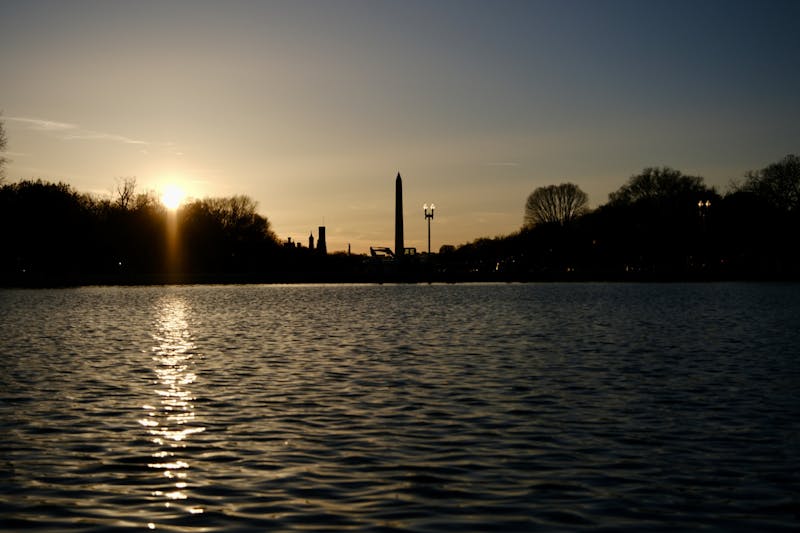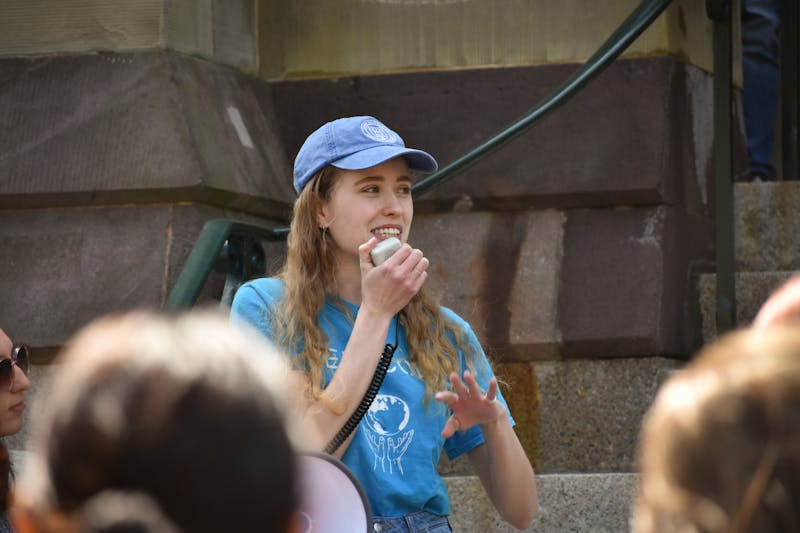President Sheldon Hackney accepted without change yesterday the recommendations of the diversity on Locust Walk committee, opting to make few physical changes and to focus largely on behavioral and philosophical issues. The long-awaited 54-page report recommends only three physical changes which can be accomplished within two years -- converting the University Counseling Services building at 3609-11 Locust Walk, the University Police Department at 3914 Locust Walk, and the building which houses WXPN at 3905 Spruce Street into student residences. The other short-term suggestions for the center of campus include adding sidewalk cafes and benches on Locust Walk lawns. Throughout the year-long battle over diversifying Locust Walk, groups of students and faculty members called for immediate changes in the atmosphere and residential make-up of the main campus thoroughfare. But much of the report details the events leading up to the formation of the committee and explains how input from the University community was sought. And while Hackney, in accepting the report, has made a step toward change, he and his committee have not progressed as far as many may have hoped. When he charged the committee last September, the president told the members they were not to consider removing Walk fraternities to make room for other students. This restriction led four committee members to refuse to sign the report. Two of the dissenting members, former STAAR coordinator Erica Strohl and Biochemistry Professor Emeritus Adelaide Delluva, wrote letters suggesting that behavioral problems on the Walk will not disappear until some or all of the fraternities are removed. Former Undergraduate Assembly Chairperson Duchess Harris and Former Panhellenic Chairperson Anita Hsueh also did not sign the report, saying in a letter that the report will not "significantly alter the mix of student residences on Locust Walk." So far, the only change that has been realized is the conversion of the former Psi Upsilon fraternity house at 36th Street and Locust Walk into a community service living-learning program. "This is a planning document," Vice Provost for University Life Kim Morrisson, a co-chair of the committee, said yesterday. "It doesn't mean that everyone is going to move out tomorrow." The rest of the committee's recommendations will take a few years to carry out. Hackney, who could not be reached for comment last night, released a statement with the report which details his reactions to the recommendations. "I am moving without delay to act on them," the statement reads. "For some projects, the implementation process should be relatively short; for others, however, timetables will have to be longer." Following the completion of the Campus Center, currently expected in 1995, the report recommends building student townhouses on the current Book Store site and converting High Rise space into academic offices. Committee members focused much of the report on expanding the current boundaries of Locust Walk to include the area extending from Superblock to Hill Field. The report also suggests that the University "recreate the desirable . . . residential character of Locust Walk in other locations such as Sansom Street and Hamilton Walk." The rest of the lengthy report focused on making the Walk seem more accessible to all students. The residential communities on the Walk should combine academic and social activities and provide outreach for the community, the report states. Committee members established ways to "encourage student behavior on Locust Walk that would set an exemplary standard for the rest of the University" by specifically targeting fraternities as linked to "misconduct" and "discomfort" on the Walk. The report suggests making fraternities follow the same rules as other dormitories. It recommends that Locust Walk fraternity houses have residential advisors and follow the University's alcohol policy, which does not allow alcohol in the dorms. The report also calls for more local alumni involvement in chapter operations, suggesting that this will help prevent abusive behavior. The study also concentrates on the philosophy of a diversified Locust Walk, which committee members say means the "inclusion" of all University people. Philosophical objectives, which comprise the first seven recommendations of the report, call for "the entire University community [to be welcomed] on an equal footing along Locust Walk." This portion of the report indicates that the VPUL's office will compile a listing of space available on the Walk for student use. Architecture and atmosphere are also addressed, though the report indicates that there should continue to be a mixture of residential, academic and social activities along the Walk and any future construction should be of the same style and scale as the current buildings.
The Daily Pennsylvanian is an independent, student-run newspaper. Please consider making a donation to support the coverage that shapes the University. Your generosity ensures a future of strong journalism at Penn.
DonatePlease note All comments are eligible for publication in The Daily Pennsylvanian.







